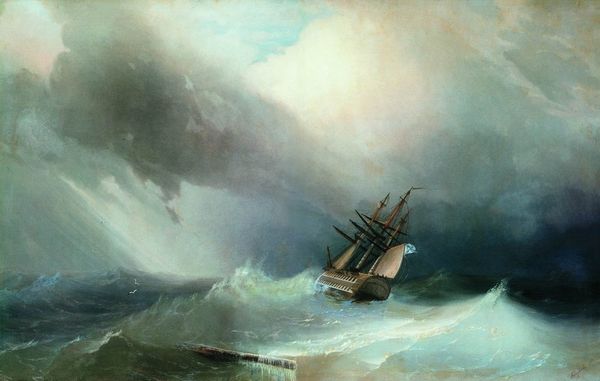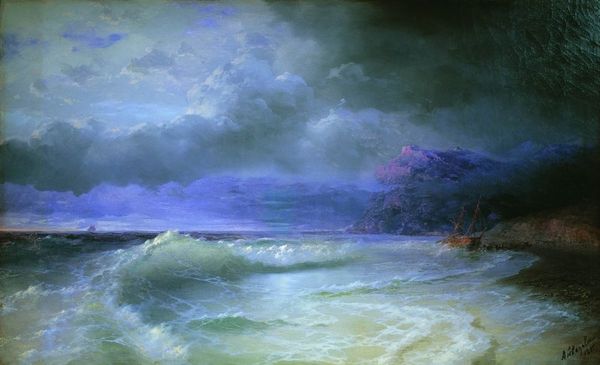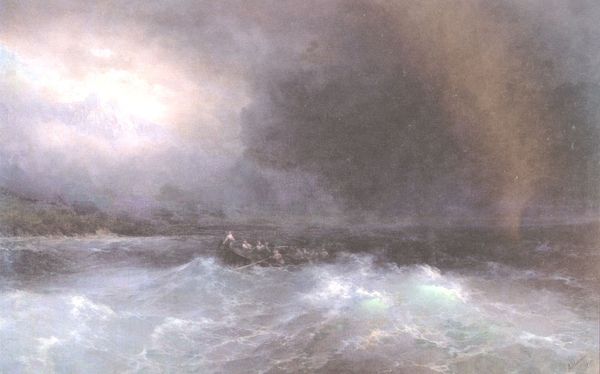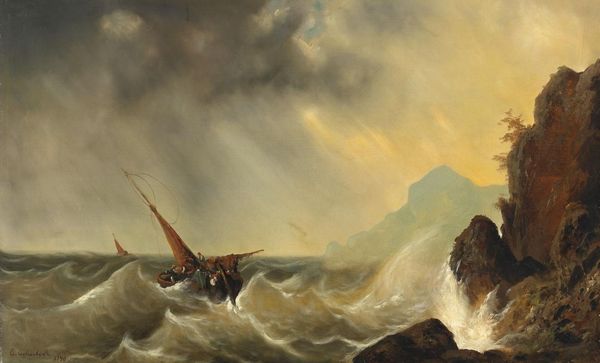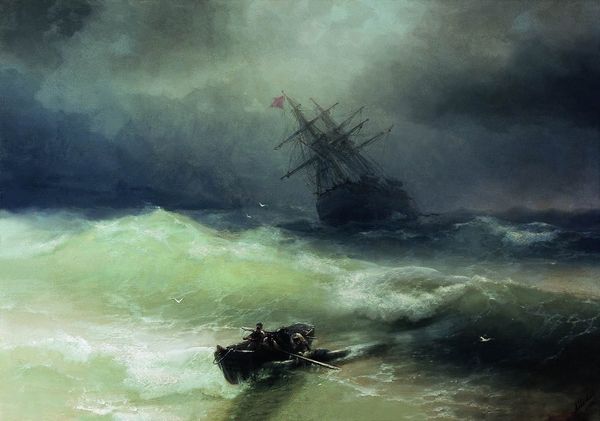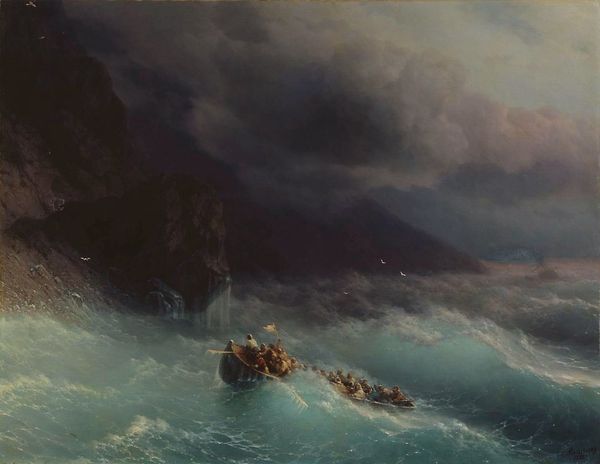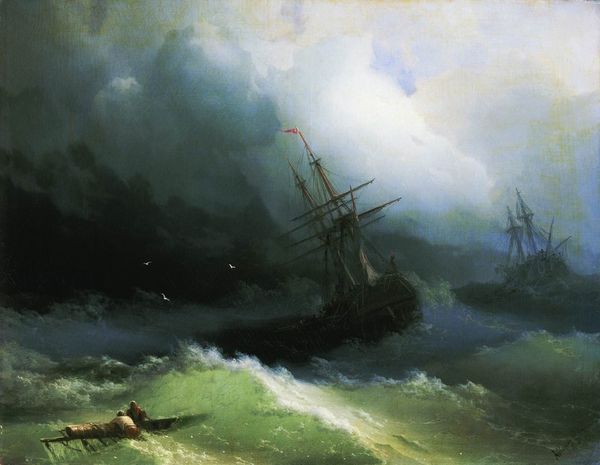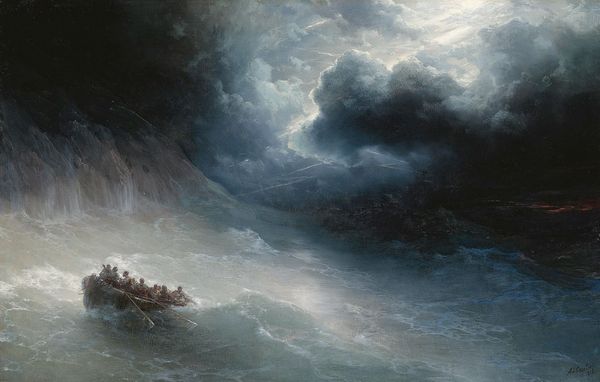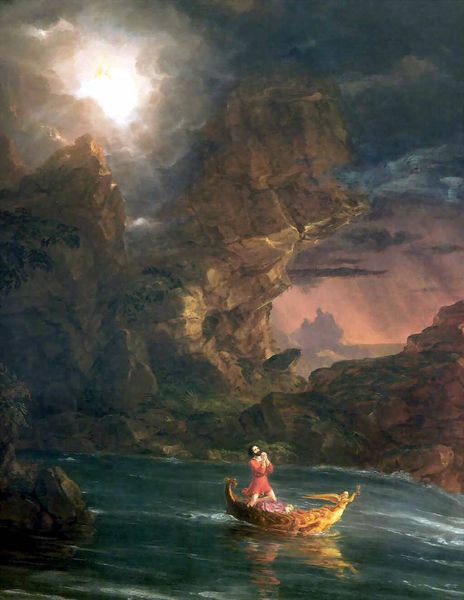
Dimensions: 36 x 46 cm
Copyright: Public domain
Editor: So, this is "The Shipwreck near rocks" by Ivan Aivazovsky, painted in 1870. The chaos of the storm and the helplessness of the figures really jump out. What can you tell me about it? Curator: This piece speaks volumes about the intersection of nature and humanity. Aivazovsky, a celebrated Russian-Armenian painter, often depicted the sea, but these weren't simply pretty seascapes. They reflect the anxieties and aspirations of a society grappling with industrialization and imperial expansion. The shipwreck, a recurring motif in Romantic art, symbolizes not just physical disaster but also the potential collapse of societal structures. Editor: That’s a really interesting way of looking at it. I was just thinking about the dramatic scene itself. Curator: Think about the context. In 1870, Russia was undergoing significant social and political changes. Serfdom had been recently abolished, leading to widespread displacement and uncertainty. Aivazovsky’s stormy seas can be seen as a metaphor for this turbulent period, reflecting the precarity of human existence against the backdrop of relentless historical forces. Where do you think the figures clinging to the rocks fit into this narrative? Editor: They seem almost insignificant against the power of the ocean, maybe suggesting a commentary on the limitations of human power in the face of larger forces? Curator: Precisely. This painting, then, becomes a powerful statement about vulnerability and resilience in a time of societal upheaval. Editor: I see it now. So it's not just a dramatic seascape, but a reflection of the social anxieties of the time. Thanks! Curator: Absolutely! Seeing art as a dialogue with its own time is crucial. It transforms our understanding.
Comments
No comments
Be the first to comment and join the conversation on the ultimate creative platform.



